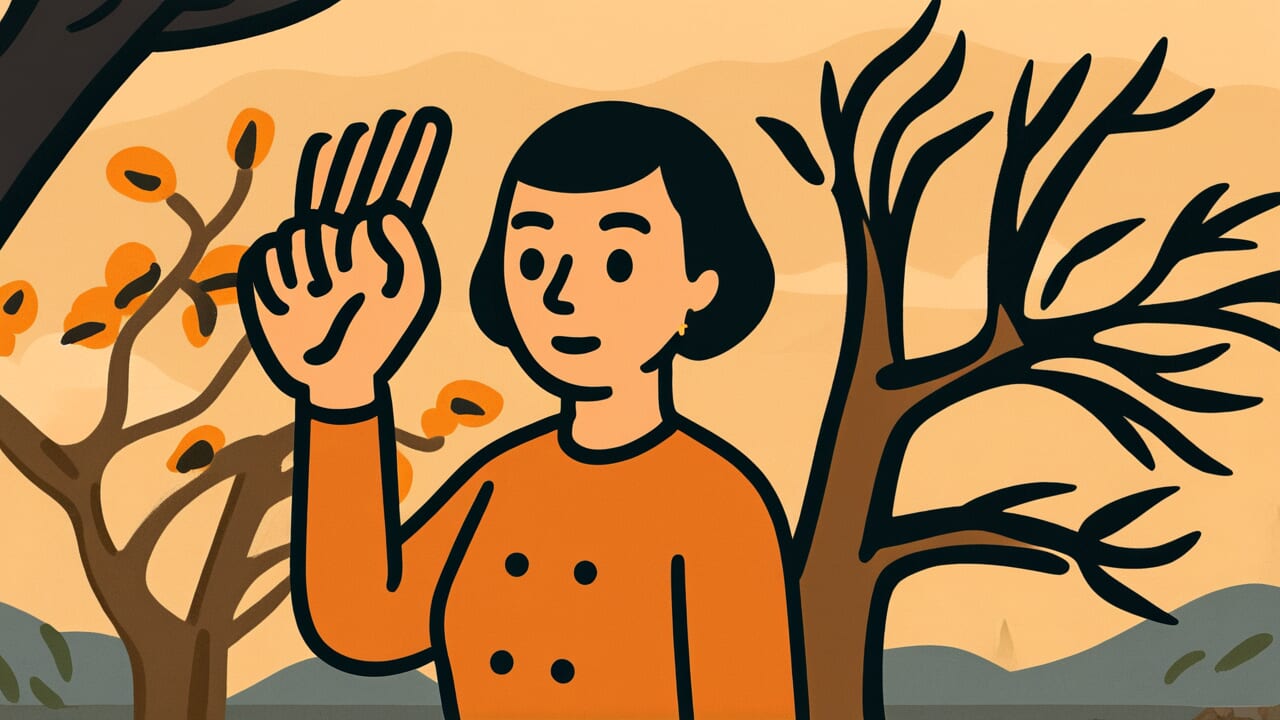How to Read “Another man’s wife and the shape of a dead tree’s branches”
Hito no nyōbō to kareki no edaburi
Meaning of “Another man’s wife and the shape of a dead tree’s branches”
This proverb describes a common human psychology. Other people’s wives and dead tree branches look beautiful and attractive simply because they don’t belong to us.
In reality, another man’s wife is probably not much different from your own. Yet she seems wonderful. Similarly, even ordinary dead tree branches look elegant when they’re in someone else’s garden.
This is the same psychology as “the grass is always greener on the other side.”
People use this proverb to warn against losing sight of what you have. It cautions against the foolishness of envying what others possess.
It’s also used with self-mockery or humor. It describes how things we can’t have seem more appealing, even when there’s no real difference.
Today, this applies to many situations. Other people’s lives look perfect on social media. Your friend’s spouse seems ideal compared to yours. This proverb captures these feelings perfectly.
Origin and Etymology
The exact origin of this proverb is unclear. However, it likely spread among common people during the Edo period.
The structure is fascinating. It pairs two completely different things: “another man’s wife” and “the shape of a dead tree’s branches.”
The phrase “another man’s wife” contrasts with your own wife. It represents the psychology that the grass looks greener on the other side.
In Edo period townspeople culture, this expressed irony and self-mockery about everyday married life.
The phrase “the shape of a dead tree’s branches” reflects Japanese aesthetics. Even seemingly worthless dead trees can have elegant branch shapes.
In tea ceremony and flower arrangement, the beauty of dead branches is highly valued. This is the aesthetic of wabi-sabi.
However, here it’s used ironically. Even things with little actual value seem attractive simply because they’re not ours. This reveals human nature.
By combining these two elements, the proverb sharply points out human psychology. It captures our tendency to want what we don’t have, all with a touch of humor.
Usage Examples
- My colleague’s wife seems wonderful, but it’s like “another man’s wife and the shape of a dead tree’s branches”—she’s probably no different from my own wife
- That house’s garden trees look magnificent, but remember “another man’s wife and the shape of a dead tree’s branches”
Universal Wisdom
This proverb reveals a deep truth. Humans cannot properly evaluate what they already possess.
Why do we find unreachable things so beautiful?
It’s because human perception works through comparison. Your wife or your garden trees are too familiar. You see them every day, so they become ordinary.
Meanwhile, other people’s things seem fresh and new. You only see them occasionally, which gives them appeal.
Plus, other people’s things have scarcity value. They’re “unattainable,” which makes them seem more valuable than they really are.
The proverb’s use of dead trees is brilliant. Even objectively worthless dead trees seem attractive simply because they belong to someone else.
This shows how powerful our cognitive distortion can be.
Our ancestors understood this psychological trap. Happiness doesn’t exist somewhere else. It begins when you recognize the value of what you already have.
This proverb continues to teach us this life truth with humor. Don’t chase distant happiness. Look at the treasures right at your feet.
When AI Hears This
Other people’s spouses and dead tree branches look attractive because our brains make two cognitive errors simultaneously.
The first is the “observer effect.” You see your own spouse every day. Your memory stores all their flaws and strengths.
But you only observe other people’s spouses in limited situations. Maybe a few times a year, dressed nicely and smiling. Your information sample is heavily biased.
Dead trees are the same. From a distance, you only notice the branch arrangement. But in your own garden, you see every insect hole and rotten spot.
The second error is “availability heuristic.” Human brains overvalue easily recalled information.
About other people’s spouses, you remember impressive moments. A clever comment at a party. A beautifully dressed appearance. These memorable scenes stick in your mind.
Meanwhile, about your own spouse, you accumulate mundane daily information. Bedhead in the morning. Bad moods. Ordinary, unremarkable details.
What’s interesting is how these biases switch based on ownership. For the same object, once it becomes yours, your brain enters full information collection mode.
For others’ possessions, it applies partial information judgment mode. This may have evolved because detailed management of your own resources was more advantageous for survival.
Surface-level evaluation of others’ resources was simply more efficient.
Lessons for Today
This proverb teaches us that happiness doesn’t exist in comparison. Everyone feels envious sometimes.
You see other people’s lives on social media and feel jealous. Your friend’s partner seems ideal. These feelings are universal.
But they might be illusions.
What matters is developing eyes that see the value in what you have. The good qualities of your daily partner. The richness of your ordinary routine.
The beauty in familiar scenery. From someone else’s perspective, these might be enviable.
However, this proverb doesn’t recommend settling for the status quo. Rather, it offers wisdom.
Don’t become dissatisfied through comparison with others. Instead, discern what you truly value.
It’s natural for other people’s grass to look greener. But don’t let that control you. Carefully tend your own garden instead.
This way of living leads to true fulfillment. Why not look at the treasures at your feet today?



Comments